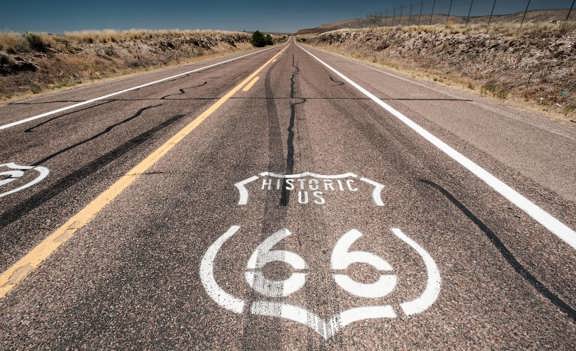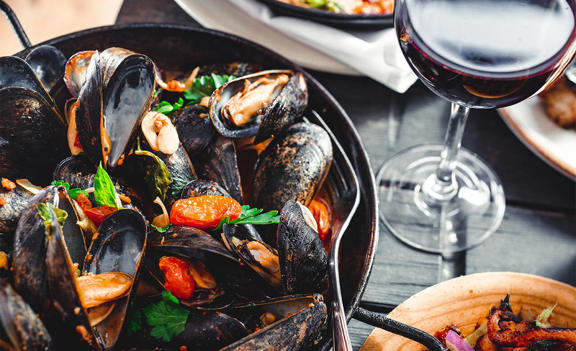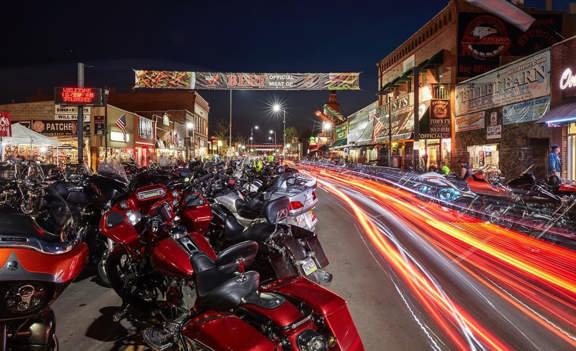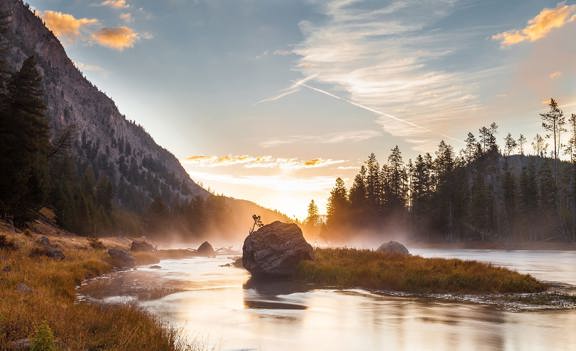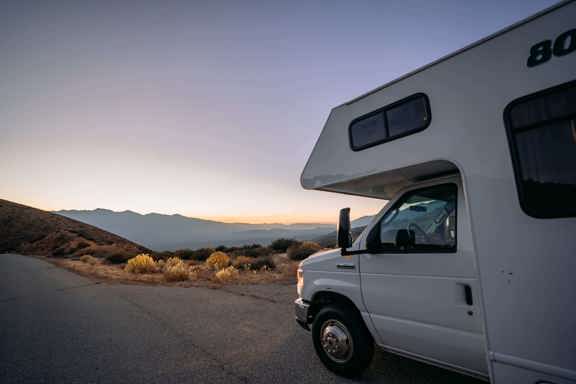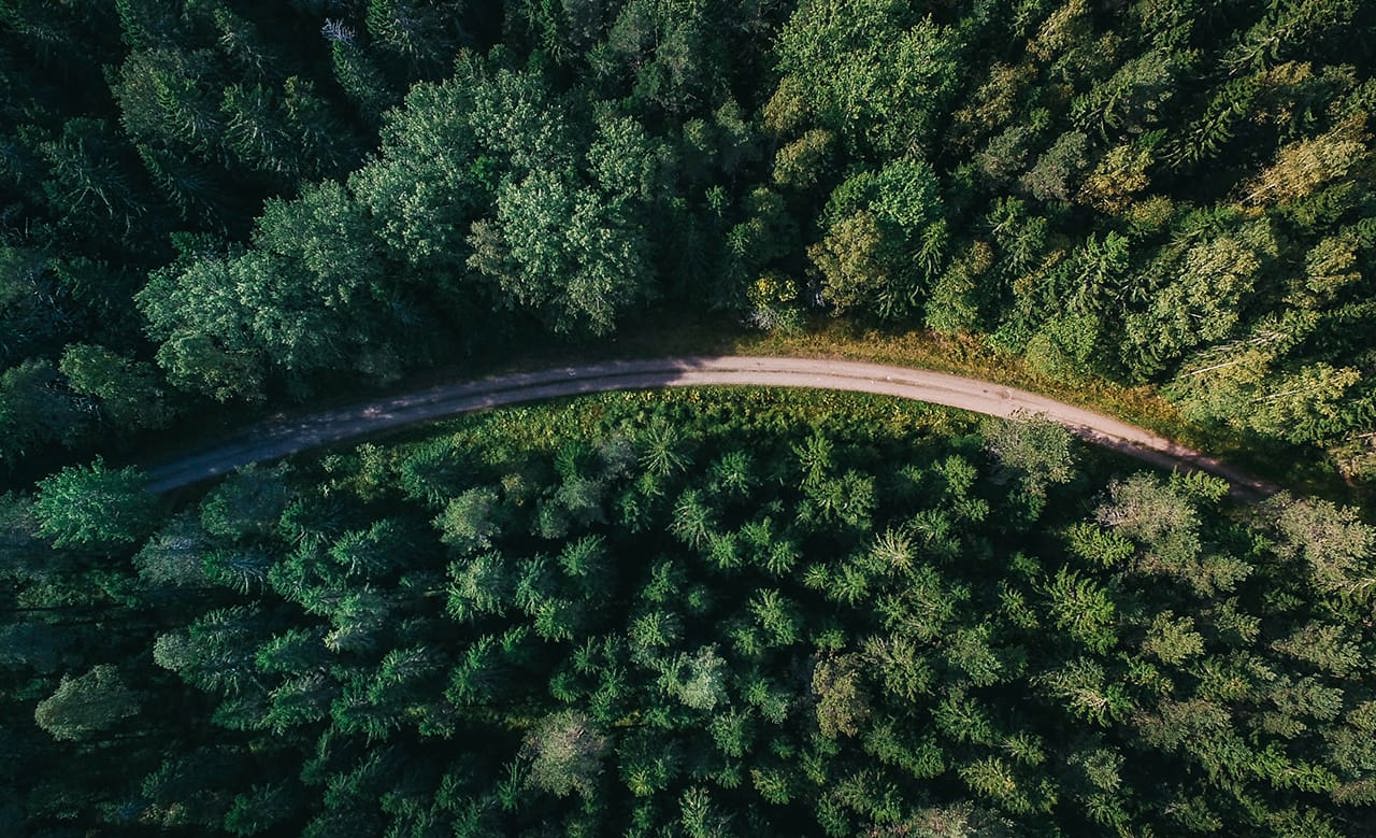
Oregon is a road trip lover’s dream. With its lush forests, craggy coastlines, alpine lakes, and cascading waterfalls, the Beaver State offers a slice of everything the Pacific Northwest is known for—all within a few scenic hours of each other. Whether you’re a nature enthusiast, foodie, or road warrior with a Cruise America RV rental, this amazing Oregon road trip itinerary will help you explore it all.
Starting in Portland and looping through the Oregon Coast, Columbia River Gorge, and Crater Lake National Park, this unforgettable journey includes can’t-miss sights, local eats, and RV-friendly campgrounds. Buckle up: your ultimate Oregon road trip begins here.
Introduction to Oregon
Oregon is a stunning state located in the Pacific Northwest region of the United States. Known for its diverse landscapes, Oregon offers a unique blend of natural beauty, outdoor recreation, cultural attractions, and West Coast vibes.
From the scenic Oregon Coast to the majestic Columbia River Gorge, and from the picturesque towns of the Willamette Valley to the rugged beauty of Eastern Oregon, there’s something for everyone in this incredible state. Whether you’re interested in hiking, biking, surfing, or simply exploring the great outdoors, Oregon is an ideal destination for your next adventure. With its stunning coastline, scenic drives, and abundant wildlife, an Oregon Coast road trip is a must-do experience in everyone’s lifetime.
Why Oregon Is the Ultimate Representation of the Pacific Northwest
When travelers picture the Pacific Northwest, they imagine misty coastlines, towering evergreens, rugged mountains, and artisan coffee. Oregon is all of that—and more. It encapsulates the full spectrum of what the PNW has to offer.
-
Diverse Landscapes: Within a few hours’ drive, you can transition from dramatic ocean cliffs to volcanic peaks to lush river valleys.
-
Sustainability & Local Culture: Oregon is known for its eco-conscious communities, farm-to-table dining, and thriving craft beer and coffee scenes.
-
Mild Climate: It offers all four seasons, but with a gentler edge than neighboring northern states.
-
Outdoor Lifestyle: Oregon prioritizes nature—whether it’s hiking, mountain biking, surfing, or skiing.
Oregon is where the soul of the Pacific Northwest lives—making it a perfect place to immerse yourself in everything this beautiful region stands for. Visiting Oregon delivers the full experience of the Pacific Northwest.
Planning Your Trip
Planning a trip to Oregon can be overwhelming, but with a little research and preparation, you can create an unforgettable itinerary. Start by deciding on the time of year you want to visit, as the state’s weather and attractions vary greatly depending on the season.
If you’re looking to explore the Oregon Coast, consider visiting during the summer months when the weather is warm and sunny. If you prefer to avoid the crowds, consider visiting during the shoulder season (March, April, September, October, November) when prices are lower and the scenery is just as beautiful.
Be sure to check the Oregon Pacific Coast Passport, which grants access to over a dozen state parks, recreation areas, and historic sites along the coast. Additionally, consider purchasing an Oregon State Parks pass, which provides access to numerous state parks and recreation areas throughout the state.
Stop 1: Portland – The Launchpad for Your Oregon Road Trip
Main Routes: I-84 East / US-26 West
Whether you're flying into Portland International Airport or are an Oregon-native, this ultimate road trip should start in Portland, the state’s largest city and a hub for indie culture, delicious food, and downtown fun. Known for its walkable neighborhoods and quirky spirit, Portland's central location makes it the perfect supply stop before hitting the open road.
Don’t Miss:
-
Washington Park: Home to the Portland Japanese Garden and Oregon Zoo.
-
Powell’s City of Books: The largest independent bookstore in the world, occupying an entire city block.
-
Voodoo Doughnut or Blue Star Donuts: Choose your side in Portland’s donut rivalry.
-
Food Truck Pods: Over 500 to choose from—everything from Thai to Cuban.
Where to Camp:
-
Jantzen Beach RV Park: Full hookups and easy access to downtown Portland.
-
Columbia River RV Park: Quiet and scenic, near the airport.
Stop 2: Cannon Beach – A Coastal Classic
Route: From Portland, take US-26 W to US-101 S (Approx. 1.5 hours)
Welcome to the Oregon Coast! Your next stop is Cannon Beach, famous for the iconic Haystack Rock that juts out of the Pacific Ocean. This charming beach town offers sweeping coastal views, stunning sea stacks, boutique shops, and incredible photo ops.
Don’t Miss:
-
Ecola State Park: Hiking trails with panoramic ocean views.
-
Crescent Beach: A scenic attraction offering beautiful coastal views, picnicking, surfing, and tidepooling.
-
Indian Beach: Known for its scenic beauty, recreational opportunities, and historical significance.
-
Pelican Brewing: Grab a cold beer and fresh-caught fish and chips.
-
Insomnia Coffee: Local espresso in a cozy, beachy setting.
Where to Camp:
-
Sea Ranch RV Park: Within walking distance of the beach.
-
Wright’s for Camping: A rustic RV spot shaded by tall evergreens.
Stop 3: Tillamook – Cheese, Coastal Views & More
Route: Head south along US-101 (Approx. 1 hour)
A short but scenic drive from Cannon Beach brings you to Tillamook, where dairy meets coastline. This stop is both delicious and beautiful, offering a slower-paced feel with plenty to explore.
Don’t Miss:
Tillamook Creamery: Free cheese samples, ice cream, and self-guided tours.
The Oregon Coast offers a variety of outdoor adventures, including exploring the vast sand dunes where you can enjoy ATVing, sandboarding, and hiking.
Cape Meares Lighthouse: Stunning ocean views and the famous “Octopus Tree.”
Blue Heron French Cheese Company: Petting zoo, gourmet deli, and local wine tasting.
Where to Camp:
-
Tillamook Bay City RV Park: Close to the cheese factory and bay.
-
Cape Lookout State Park: Wooded, oceanside campsites perfect for RVs.
Stop 4: Columbia River Gorge – Waterfall Wonderland
Route: Backtrack north on US-101, then take US-26 E to I-84 E (Approx. 2.5 hours)
After the coast, it’s time to head inland and witness one of the most scenic drives in the Pacific Northwest: the Columbia River Gorge. Carved by glaciers, this area is bursting with dramatic cliffs, waterfalls, and hiking trails.
Don’t Miss:
-
Multnomah Falls: Oregon’s most famous waterfall—620 feet tall!
-
Latourell Falls & Wahkeena Falls: Just minutes away from Multnomah.
-
Hood River: A charming town known for craft beer and kite surfing on the river.
Certain locations along the Oregon Coast are best explored during low tide to fully appreciate the visible marine life and various geological formations.
Where to Camp:
-
Bridge RV Park & Campground (Cascade Locks): Well-situated and peaceful.
-
Ainsworth State Park: Right in the heart of waterfall country.
Stop 5: Bend (Optional Detour)
Route: From Hood River, take OR-35 S to US-26 E to OR-97 S (Approx. 3.5 hours)
Want to extend your trip? Make a detour through Bend, a high-desert city surrounded by volcanic landscapes. It’s great for outdoor lovers and offers plenty of breweries and unique hikes.
Don’t Miss:
-
Pilot Butte: Drive to the top for views of the Cascade Mountains.
-
Deschutes Brewery: One of Oregon’s original and most famous craft brewers.
-
Smith Rock State Park: Rock climbing and scenic canyon hikes.
Downtown Bend is a central hub for visitors, emphasizing its proximity to attractions like Drake Park and the Deschutes River.
Where to Camp:
-
Crown Villa RV Resort: Luxurious, forested, and full of amenities.
Final Stop: Crater Lake National Park – Oregon’s Crown Jewel
Route: From Hood River or Bend, take OR-97 S to OR-62 W (Approx. 4–5 hours)
No Oregon road trip is complete without witnessing the breathtaking Crater Lake National Park. Formed by the eruption of Mount Mazama over 7,000 years ago, Crater Lake is the deepest lake in the U.S. and a stunning sapphire blue.
Don’t Miss:
-
Rim Drive: A 33-mile loop with overlooks and photo ops galore.
-
Watchman Peak Trail: A short hike with sweeping views.
-
Crater Lake Lodge: Even if you don’t stay, grab a drink and enjoy the view from the patio.
Where to Camp:
-
Mazama Village Campground: RV-accessible and inside the park (open seasonally).
-
Diamond Lake RV Park: Just north of the park with beautiful lake views.
Best Time to Take an Oregon Road Trip
The ideal time for your Oregon road trip is May through October. These months offer the best weather and full access to Crater Lake (which is often snowed in until late spring). Here's a breakdown:
-
May–June: Fewer crowds, spring blooms, waterfalls in full force.
-
July–August: Peak season, best weather, and full access to all roads.
-
September–October: Fall colors, cooler weather, and thinner crowds.
RV Travel Tips for Your Oregon Adventure
-
Check RV Park Reservations Early: Especially near Crater Lake and Cannon Beach.
-
Watch for Elevation Changes: Crater Lake sits at 7,000+ feet—drive carefully.
-
Bring Layers: Coastal mornings are chilly, but inland regions like Bend can hit 90°F in summer.
-
Dump Stations: Available at most state parks and major campgrounds.
-
Cruise America Tip: Plan gas stops in advance—especially on stretches like between Bend and Crater Lake.
Summary of Road Trip Route & Highways
-
Start in Portland (I-84 or US-26)
-
Drive to Cannon Beach (US-26 W → US-101 S)
-
Continue to Tillamook (US-101 S)
-
Return inland to Columbia River Gorge (US-26 E → I-84 E)
-
Optional Bend detour (OR-35 S → US-26 E → US-97 S)
-
End at Crater Lake (OR-97 S → OR-62 W)
Total mileage (with Bend): Approx. 850 miles
Ideal duration: 7–10 days
Extra Oregon Gems to Add to Your Trip
Exploring the Columbia River
The Columbia River is an iconic waterway that forms the border between Oregon and Washington. The Historic Columbia River Highway, which runs along the river, offers stunning views of the gorge and is a popular destination for road trips. The Columbia River Gorge is home to numerous hiking trails, waterfalls, and scenic viewpoints, making it a nature lover’s paradise.
Visitors can explore the gorge by car, bike, or on foot, and enjoy the stunning scenery and abundant wildlife. Be sure to stop at the Portland Women’s Forum Scenic Viewpoint, which offers breathtaking views of the river and the surrounding landscape. The Columbia River is also home to several dams, including the Bonneville Dam, which offers guided tours and good views of the river.
Sea Lion Caves – A Natural Wonder on the Oregon Coast
Just 11 miles north of Florence along the scenic U.S. Highway 101, the Sea Lion Caves stand as one of Oregon's most remarkable natural attractions. Recognized as America's largest sea cave, this privately owned wildlife preserve and bird sanctuary offers visitors a unique glimpse into the lives of Steller sea lions in their natural habitat.
A Geological Marvel
Formed over 25 million years ago, the Sea Lion Caves encompass a vast network of connected caverns and tunnels carved into basalt rock. The main chamber stretches approximately 1,315 feet in length and boasts a vaulted ceiling reaching 125 feet high—comparable in size to a 12-story building and as wide as a football field. The cave's walls are adorned with vibrant hues of greens, pinks, purples, and reds, created by lichens, algae, and mineral deposits, forming natural artworks like "Lincoln’s Head" and "The Goddess of Liberty."
Wildlife in Their Natural Habitat
The Sea Lion Caves serve as the only known mainland rookery (breeding area) and wintering home for Steller sea lions in the contiguous United States. During the fall and winter months, hundreds of sea lions gather inside the cave to seek shelter from the harsh coastal weather. In spring and summer, they migrate to the rocky ledges just outside the cave for breeding and birthing. Visitors can observe these magnificent creatures as they rest, interact, and bark loudly, creating an unforgettable auditory and visual experience.
Beyond sea lions, the area is a haven for diverse wildlife. Bird enthusiasts can spot species such as pigeon guillemots, Brandt's cormorants, and tufted puffins nesting in the cliffs. Occasionally, gray whales and orcas can be seen migrating along the coast, especially during the spring and fall seasons.
Visitor Experience
Access to the caves is made convenient by an elevator that descends 208 feet into the cavern, leading to an observation area situated about 50 feet above the cave floor. This vantage point offers panoramic views of the sea lions and the rugged coastal landscape. The elevator, completed in 1961, was a significant engineering feat, designed to withstand the corrosive marine environment.
The site is open daily from 9:00 AM to 5:00 PM, with the last ticket sold at 4:30 PM. Admission fees are $18.00 for adults, $17.00 for seniors, and $12.00 for children aged 5 to 12. Children under 5 enter for free. Free parking is available, including spaces suitable for RVs.
Nearby Attractions
While visiting the Sea Lion Caves, consider exploring other nearby attractions:
-
Heceta Head Lighthouse: Just a mile north, this historic lighthouse offers stunning views and a picturesque setting.
-
Old Town Florence: A charming district with unique shops, art galleries, and delightful dining options along the Siuslaw River.
-
Oregon Dunes National Recreation Area: Located 40 minutes south, this expansive area features towering sand dunes, perfect for hiking and off-road adventures.
Lewis and Clark National Historical Park (Astoria, OR)
Step into the footsteps of the legendary explorers at Lewis and Clark National Historical Park. Centered around Fort Clatsop, the winter encampment of the Corps of Discovery, the park offers immersive exhibits and a replica of the original fort. Explore 14.5 miles of trails that meander through lush forests and along the Columbia River, mirroring the paths once taken by the expedition. Don't miss the Fort to Sea Trail, a 6.5-mile route leading from the fort to the Pacific Ocean, offering a tangible connection to history.
Fort Stevens State Park (Hammond, OR)
A blend of military history and coastal beauty, Fort Stevens State Park spans 4,300 acres where the Columbia River meets the Pacific Ocean. Discover the remnants of a military installation active from the Civil War through World War II, including concrete batteries and the famous Peter Iredale shipwreck. The park boasts extensive trails, freshwater lakes, and some of Oregon's most expansive beaches, making it a haven for campers, hikers, and history enthusiasts alike .
Yaquina Head Lighthouse (Newport, OR)
Standing as Oregon's tallest lighthouse at 93 feet, Yaquina Head Lighthouse offers panoramic views of the Pacific Ocean. Located within the Yaquina Head Outstanding Natural Area, visitors can explore tide pools teeming with marine life at Cobble Beach, observe nesting seabirds on Colony Rock, and, during migration seasons, spot gray whales offshore. The adjacent interpretive center provides insights into the area's rich natural and cultural history.
John Dellenback Dunes Trail (Lakeside, OR)
Experience the vastness of the Oregon Dunes National Recreation Area on the John Dellenback Dunes Trail. Beginning in a serene coastal forest, the trail transitions into expansive sand dunes, offering hikers a unique landscape of shifting sands leading to the Pacific Ocean. Markers guide the way, but the ever-changing terrain provides a sense of adventure and solitude, making it a must-visit for nature lovers.
Gold Beach (Southern Oregon Coast)
Nestled at the confluence of the Rogue River and the Pacific Ocean, Gold Beach is a coastal gem offering a mix of adventure and relaxation. Engage in world-class fishing, embark on jet boat tours up the Rogue River, or explore the scenic trails of the Rogue River-Siskiyou National Forest. The area's uncrowded beaches, such as those at Otter Point State Recreation Site, provide perfect spots for beachcombing and wildlife watching.
Oregon Coast Trail – Hike Along the Edge of the Pacific
Stretching over 360 miles from the mouth of the Columbia River to the California border, the Oregon Coast Trail (OCT) is a stunning long-distance hiking route that hugs the entire western edge of the state. It weaves through sandy beaches, coastal forests, rocky headlands, and charming seaside towns—offering some of the most scenic and varied terrain in the Pacific Northwest.
Why It’s Worth a Stop on Your Road Trip:
Even if you’re not thru-hiking, the trail is broken into dozens of accessible day hikes and short sections perfect for exploring during a coastal RV trip. Many popular stops—like Ecola State Park, Cape Perpetua, and Harris Beach State Park—feature marked trailheads and coastal viewpoints that are part of the OCT.
Highlights:
-
Beach Walks: Uninterrupted shoreline stretches where you’ll often have the coast to yourself.
-
Tidepool Exploration: Stop and explore vibrant marine life at low tide.
-
Wildlife Watching: Keep an eye out for seals, puffins, and migrating whales.
Why a Road Trip Through Oregon Is Worth the Time and Money
Let’s face it—vacation days and travel budgets are limited. But if you’re going to invest your time and money anywhere, Oregon offers an incredible return on your travel investment.
Plan your Oregon trip to experience the diverse and scenic attractions the state has to offer.
Here’s why:
-
Compact but Epic: You can see an ocean, waterfalls, and a volcano all in the same trip without crossing state lines.
-
RV-Friendly: Oregon is one of the most RV-friendly states in the U.S. with clean, scenic campgrounds and ample resources.
-
Fewer Crowds: Compared to places like California or Washington's national parks, many of Oregon’s treasures are easier to access and less crowded.
-
Affordable Stops: Many of the highlights—state parks, scenic highways, and beaches—are free or low-cost.
-
Endless Customization: Want to relax? Want to hike? Want to surf, ski, or taste wine? You can tailor this road trip to fit any kind of adventure.
With a Cruise America RV, your lodging and transportation are rolled into one—helping you save on hotels, meals, and rental cars while traveling in comfort and style.
Oregon Road Trip FAQ
Do I need a special permit to camp in Oregon state parks with an RV?
Most state parks just require a reservation and standard camping fees. No special permits are needed for private RVs under 40 feet.
When is Crater Lake open?
A: The park is open year-round, but Rim Drive and many campgrounds close between late October and mid-June due to snow.
Is Multnomah Falls open year-round?
Yes, but access may be limited during icy winter conditions. Summer and early fall offer the best combination of weather and water flow.
Can I swim in Crater Lake?
Technically yes—at Cleetwood Cove Trail, where you can hike down to the water. But be prepared: the water is frigid, even in summer.
Is it safe to drive a Cruise America RV on Oregon’s winding mountain roads?
Yes! Cruise America RVs are designed for easy handling. Just drive slower on steep grades and use lower gears when descending.
What’s the best Oregon coast driving trip for beginners?
The Portland to Cannon Beach to Tillamook stretch is ideal—short, scenic, and packed with easy stops and coastal views.
Are there bears or other wildlife to watch out for?
Black bears exist in southern Oregon and near Crater Lake, but encounters are rare. Use normal food safety practices at campsites.
Ready to Explore Oregon the RV Way?
From ocean views to mountain lakes, your Oregon road trip offers an unforgettable journey through one of America’s most diverse and scenic states. Renting a Cruise America RV means you get the freedom to camp under the stars, follow your own schedule, and bring the comforts of home with you.
For added convenience and flexibility, consider renting a rental car to explore Oregon's hidden gems and scenic routes at your own pace.
Book your RV today and let the road lead you to waterfalls, volcanoes, coastal cliffs, and memories that last a lifetime.
